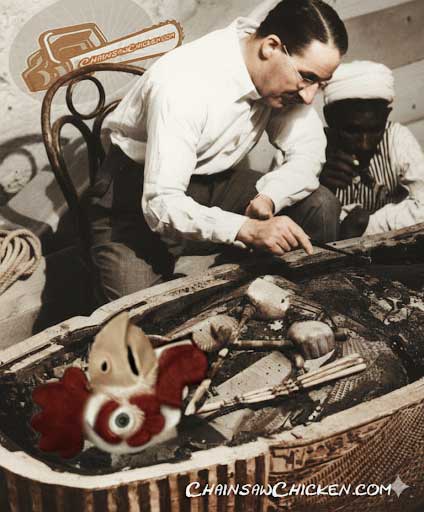
In November 1922, Howard Carter brushed away the sands of time and declared he had discovered a tomb “virtually untouched for over 3,000 years.” What he didn’t tell the newspapers was that the tomb wasn’t just full of gold, scarabs, and ceremonial trinkets… it was also full of poultry.
Buried beneath layers of linen and history lay Tutankhamun Chicken — a boy king, embalmed with a gizzard the size of a papyrus scroll. His sarcophagus carried not just royal markings, but the unmistakable beak and vacant stare of dynastic poultry power.
Egyptologists marveled at the treasures. I marveled at the fact that the burial mask had a slot for a wattle. They said it was symbolic of eternity — I said it was symbolic of someone stuffing the afterlife with extra corn feed.
The world swooned at the thought of untold riches. But for me, all I saw was another entry in the family album. Long before Chainsaw Chicken made headlines, young Tutan Chicken was already ruling the roost.
